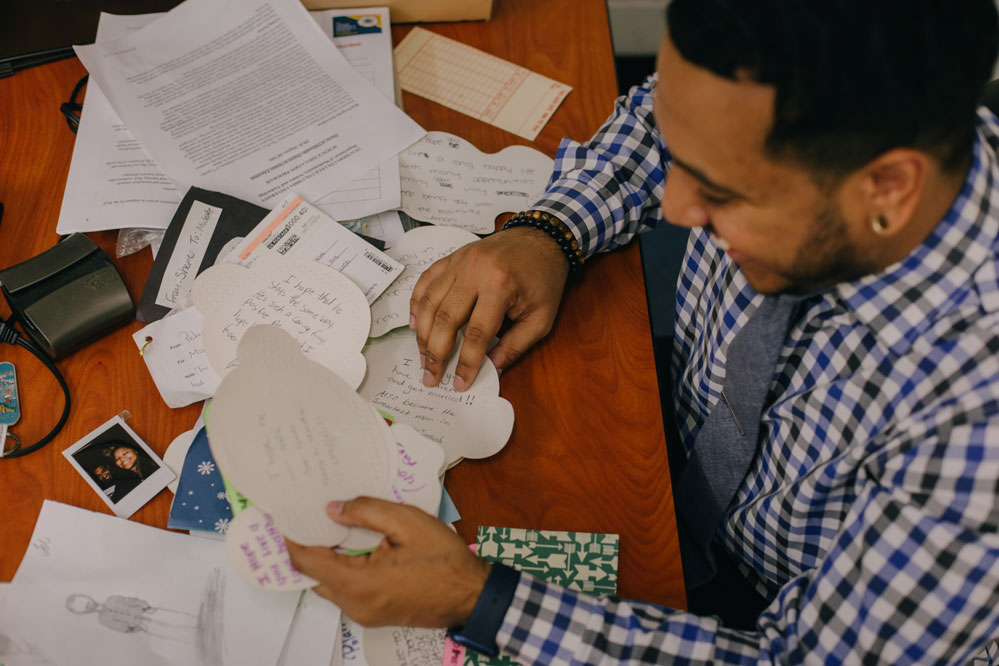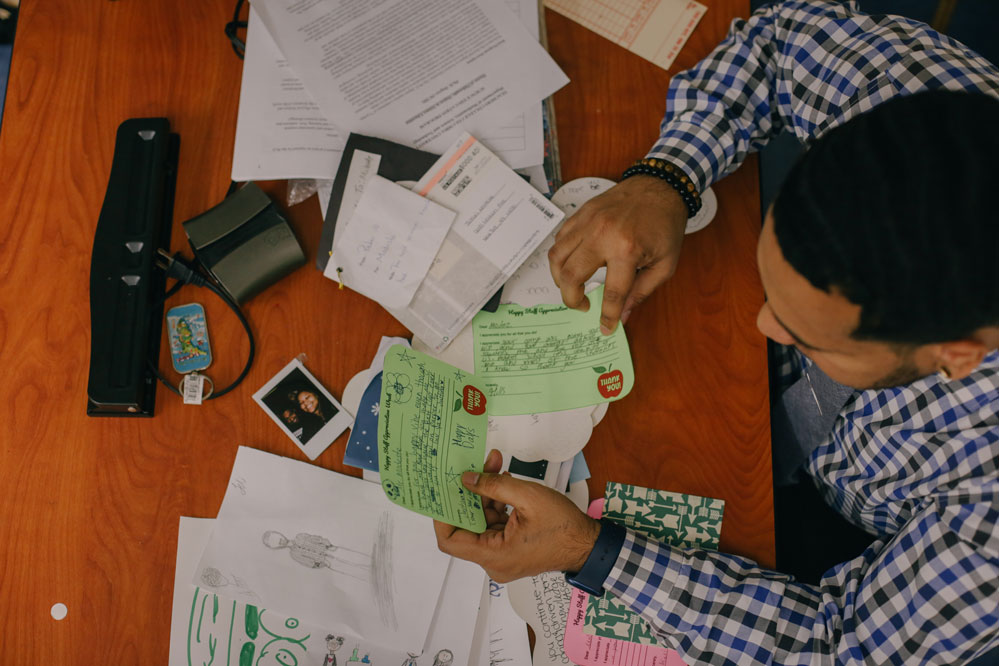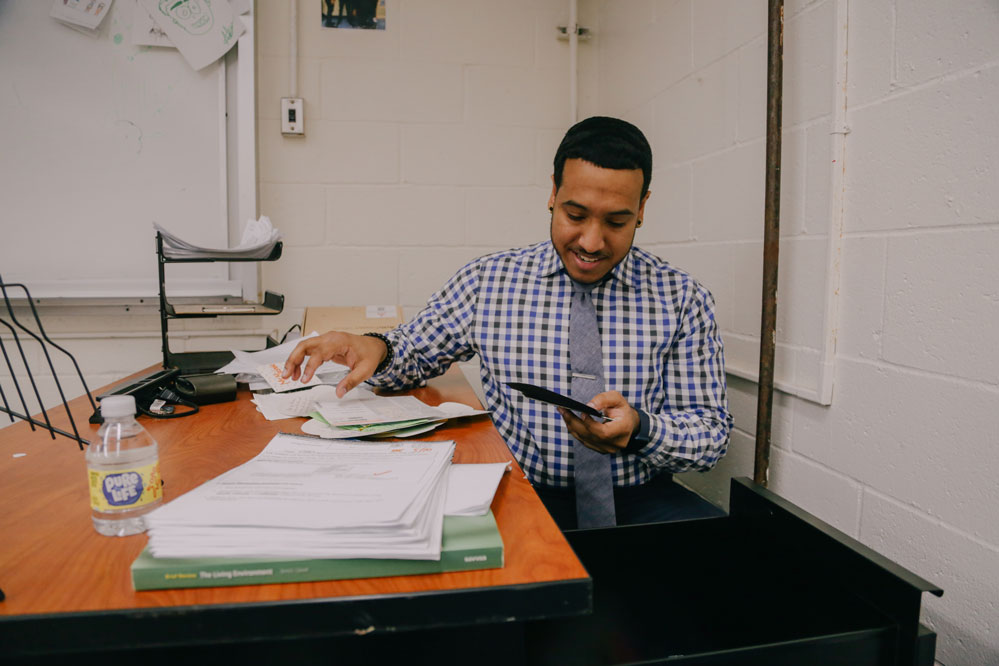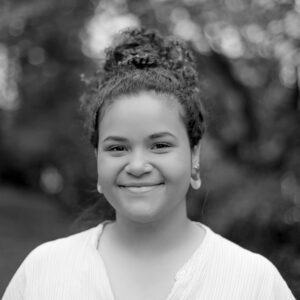What One Educator’s Grief Reveals About the Mental Health Challenges Facing Teachers Now
Joshua Modeste is learning how to cope with student loss & anxiety, but feels like he’s alone. Experts say addressing teacher trauma can aid learning
By Marianna McMurdock | February 4, 2023His day began with a ritual — listening to the news in the shower. But then he heard something that paused time: ‘Girl stabbed to death in Harlem, teen sought.’
A familiar anxiety set in.
It wasn’t until New York City high school science teacher Joshua Modeste saw photos of the teenagers involved in the December stabbing the tension eased: He did not know her.
A little over a year had passed since he lost his first student, Benji, 16, shot in the stomach a few blocks away from school. Soon after, he lost another when Benji’s best friend was briefly incarcerated. Ever since, when he hears about violence involving a young person, he feels dread build in his gut.
A few hours passed before he was reminded of why. A student, hanging out in his room over lunch to do makeup work, yelled out, “What?! Oh my God,” before bolting into the hall. The Harlem victim, Saniyah, was her friend.
Modeste felt unprepared, and worn out. Within one year, he and his mostly Black and Latino students at Harlem’s Urban Assembly School of Global Commerce navigated death, prisons, racial violence, a continuing pandemic. As one of the school’s few Black male teachers he shouldered a disproportionate weight through it all, and isolation has become his norm.
And while the youth mental health crisis mounts, so does the toll for educators on the frontlines — especially as clinical shortages force teachers like Modeste to manage alone. Traction is building for student supports, but some worry teachers are being left behind — a direct hit to learning recovery.
“Nobody in the teaching department or other teacher candidates talked to us about that stuff — trauma and grief, emotions, and how to manage all of that while trying to maintain a classroom of 30 kids who are going through their own situations at home,” Modeste said of his teacher preparation program at SUNY Plattsburgh.
(While there is no class on these topics at Plattsburgh, the curriculum has been revised since Modeste’s graduation in 2016 and “these themes are woven through many of our courses,” Maureen Squires, chair of the joint bachelor’s and master’s program, told The 74.)
“It was kind of like, ‘If you can’t handle this, then this is not the job for you,’” Modeste said. Still, there’s not a doubt in his mind that he should continue teaching. In fact, he’s flourishing professionally, last year among the prestigious FLAG Awardees for Teaching Excellence.
But he is struggling.
Teachers are tied with nurses for experiencing more job-related stress than any other profession. Yet help for classroom leaders is hard to come by. Mental health insurance coverage varies district to district, if visits are covered at all. Even in New York City — where teacher copays for outpatient, in-network mental health care max out at $25 — provider shortages and stigma can prevent educators from accessing care consistently.
The demand for professional support is also growing rapidly. Anxiety and depression symptoms in teachers are on the rise, highest for early career educators and teachers of color, according to Leigh McLean, a researcher at the University of Delaware.
Overall in the 2018-19 school year, 4,550 New York City teachers accessed free short-term confidential counseling services through their union, the United Federation of Teachers. Last year, the number exceeded 20,000. Daily calls to the program soared, from about 20 to 100 per day; hundreds of school social workers volunteered after school and on weekends to meet the need.
For McLean, who has studied the impact of teacher depression for years, the reality is simple — educators have been given an impossible task.
“Especially through COVID, we’re putting the emphasis on teachers themselves to support their own well-being. But we’ve created a system that is not supportive of their well-being,” she said.
Modeste knows this to be true. Now in his seventh year of teaching, he relied on instinct, not training, to meet Saniyah’s friend in the hall that December afternoon.
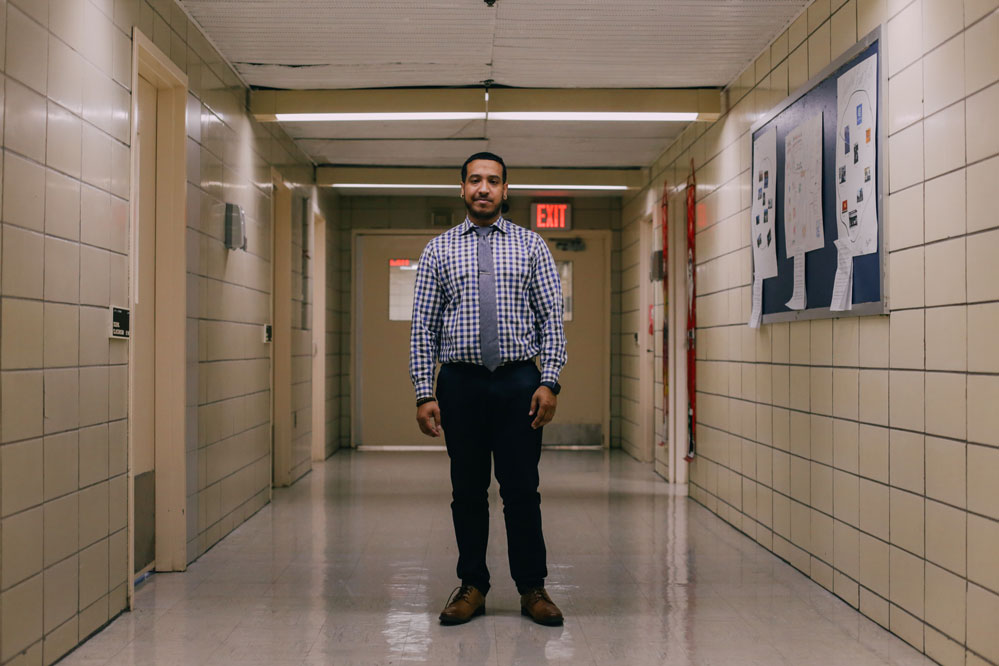
He asked about their friendship, whether her mom knew her too, what she might need. He told her grief surfaces in many ways, but “I can’t tell you where that starts or ends,” before offering an empty room for her to cry.
‘My anxiety lives in my belly’
The son of Trinidadian pastors and youngest of three brothers, Modeste didn’t grow up talking about mental health. Don’t cry, give it to God in prayer.
“Society has told me that Black men are supposed to be strong and figure things out on their own,” he said. “Black men don’t talk to me about therapy. So it doesn’t seem like something that’s normal.”
But the emotional weight was building each day. Soon after the murder, one of Modeste’s students sat visibly crying in class. Benji’s best friend. He did not know what to wear to the funeral — this would be his first.
Entering grades at the semester’s end, Benji’s name on his roster stared at him, waiting for an entry. In November, Facebook memories brought back pictures, and emotions, at the year anniversary. The funeral was the first time he had seen many of his students cry, especially the boys.
“I thought I got through it. And then this time of the year resurfaced some stuff for me,” he said.
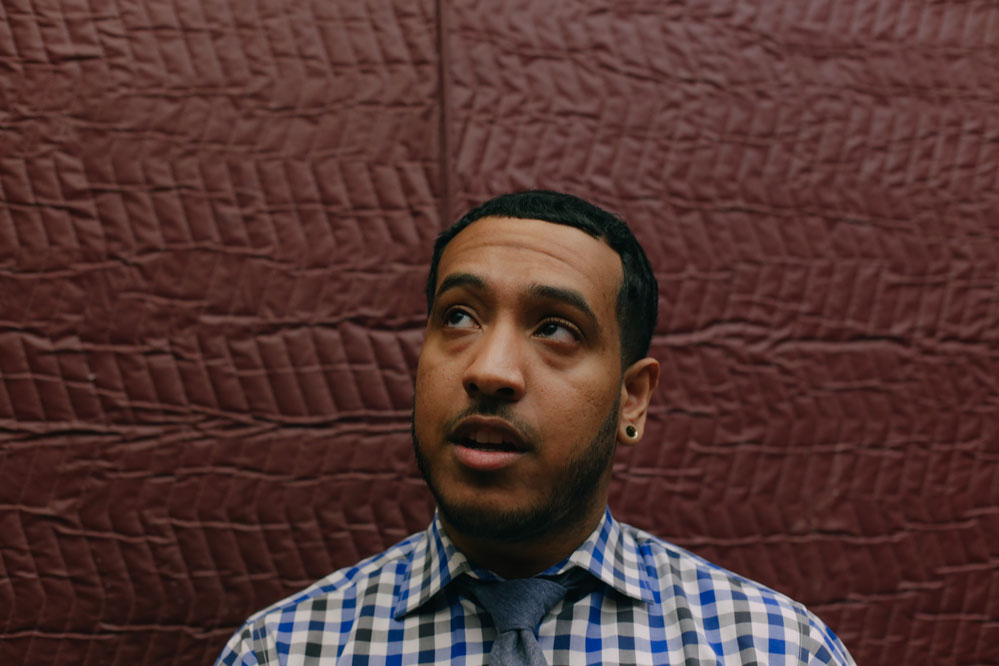
Psychologists dub the phenomenon vicarious trauma or empathetic distress. Studies have mainly focused on clinical staff like social workers or therapists. Tish Jennings, an expert on teacher stress and social-emotional learning at the University of Virginia, said researchers have only recently started to explore how it affects teachers and students.
“You need therapy when you have trauma exposure,” she told The 74. “It’s very hard these days to get good treatment, because there’s such a huge need, and there’s such a shortage of good clinicians.”
Because of the clinical shortages impacting New York City teachers, “members who cannot wait for an appointment sometimes go to a mental health provider outside the networks. These professionals often don’t take insurance and can charge what they want,” said Alison Gendar, a UFT spokesperson.
Unaware of the options provided by the union and in crisis, Modeste urgently searched for a male therapist of color last fall. He ultimately paid over $120 for a month of Talkspace sessions, but could not afford to continue treatment. The NYC Department of Education did not provide grief counseling to staff or students after losing Benji, according to Modeste.
“If you have to deal with traumatized people all the time and you don’t have the skills, you can try to numb yourself as a way to protect yourself from feeling those feelings,” Jennings explained. “You can also become kind of challenged or jaded, sarcastic as a way to protect yourself. And you can also become very overwhelmed and feel depressed and hopeless.”
Teachers’ depression is shown to impact learning — teachers plan less, expel students more, may rely on independent or group instead of the more demanding whole-class instruction, and are less warm with students.
High stress takes a toll, too; Jennings described a scenario where a teacher under extreme stress is quicker to overreact, taking a small disruption personally, “I might not realize this is normal kid behavior and become more punitive in response to that.”
Ideally, teachers should receive training or therapy to become aware of their emotional state so as to, “respond to situations thoughtfully instead of reacting automatically,” she added.
Modeste is beginning to recognize when physical sensations pop up and articulate his needs, or to meditate — skills he picked up at a mindfulness workshop by NYC Men Teach.
“My anxiety lives in my belly,” he said.
Experts told The 74 teaching mindfulness and compassionate response to student trauma is necessary, but by themselves, cannot reduce the high levels of stress teachers face. The most effective changes are system-wide, not individual: comprehensive health care packages; staff devoted to teacher well-being; professional development; and establishing teacher support networks.
An invisible tax
They’re the kinds of support that teachers are craving, particularly those who serve students disproportionately impacted by poverty, homelessness, incarceration or violence. For Modeste, constant exposure to violence and death in the community and online weighs heavy on the mind. In his youth, the only time he saw dead bodies was at funerals.
Last May during class, he confronted what he called a new “death culture:” a student watching the Buffalo grocery store massacre video on Twitch during class. He had mistaken it, like many young people, for a first-person shooter game. This fall, images of rappers Takeoff and PnB Rock’s death circulated.
“I was like, ‘No, why are you watching these things? Do you understand the impact that this stuff is having on you?’” he recalled. “I don’t know if people are processing with them, what that means for you to look at that person, someone that you looked up to or somebody that you listen to their music, to see a picture of them on the floor dead.”
It’s also not lost on him that, for some students, he may be the only one with whom they’re comfortable talking. Researchers and those in the field refer to this as an “invisible tax” on educators of color, often among the few adults in a school who represent their students’ racial identities, are more likely to share life experiences.
Black teachers report having to discipline students of color and be liaisons to families more often because of their race, according to the Center for Black Educator Development. They may also navigate more lack of trust from administrators and colleagues.
Compared to white male teachers, Black teachers spend double the time counseling students outside of class, about five hours per week. Modeste, for instance, shared his phone number with students when they went remote for the first time in the spring of 2020 — a way to stay connected if they needed it. And many did.
He fielded calls throughout distance learning, while battling his own anxiety and isolation, witnessing anti-Black violence week after week. In sometimes hour-long conversations, he listened to students vent about fights they had with their mother; college applications and whether STEM could really be an option for them.
Since returning to class, some have opened up about feeling hypersexualized, like they have to perform masculinity and some idea of what it is to be a Black man. Modeste keeps a note from one student, who was suicidal while in his class, in his desk at all times.
While the staff at Global Commerce is racially diverse, Modeste finds himself dispelling assumptions staff place on students — about how they spend their money or why their families live in nearby affordable housing projects — something no one had done for him. And like most other urban schools, teacher turnover is high, Modeste is one of the longest-serving teachers.
“It creates a situation where students feel either abandoned or they feel like they don’t have anyone to connect to … It puts an extra responsibility on me,” he said.
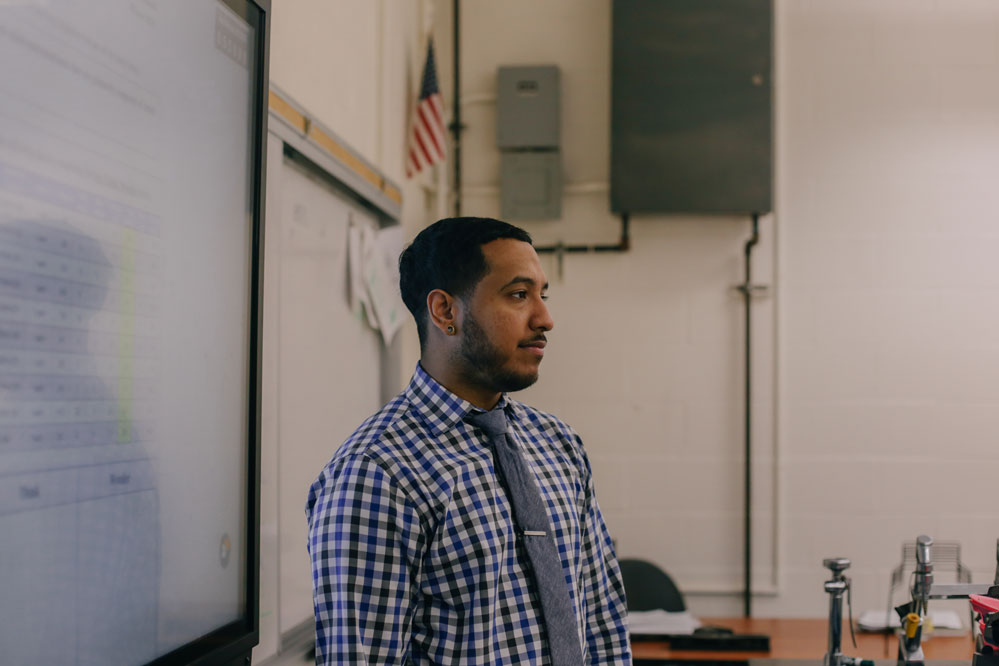
The research is clear in this regard, according to McLean: “Teachers and students in these underserved contexts are really experiencing the most trauma and are the ones that need the most prioritized and targeted support.”
Modeste knew that would be his reality before beginning his career, but he’s still realizing the toll.
In December, he briefly tried psychotherapy again through a free Betterhelp trial, offered through a teacher honor society. He had a couple sessions with a Black male therapist and wanted to continue, but the $200 per month price tag stopped him.
For now, Modeste and his advisory students have started role-play scenarios on setting boundaries and saying no, swapping TV shows and music that helps them cope with feeling overwhelmed. Leaning on cultural affinity groups and colleagues, he is finding ways to “reframe” the parts of his life that serve as informal therapy: journaling, writing affirmations like ‘focus’ and ‘love’ on his bathroom mirror in Expo marker and caring for his pet fish.

In his Ph.D. program at Columbia Teachers College, he’s researching ways to make science education more culturally responsive, and digging into the experiences of male science teachers of color.
He doesn’t hide emotions anymore, or ignore what’s happening outside of school. His default demeanor is bubbly, but on days he’s going through something, he smiles and talks less.
“And kids will ask me like, you know, ‘Yo, Modeste are you OK?’ That’s when I open up … ‘Oh, you know, I’m going through some stuff with my family, I just need some space right now,’” he said. “I think that that shows them that when I ask them if they’re OK, the responses that I’m trying to elicit.”
Get stories like these delivered straight to your inbox. Sign up for The 74 Newsletter

